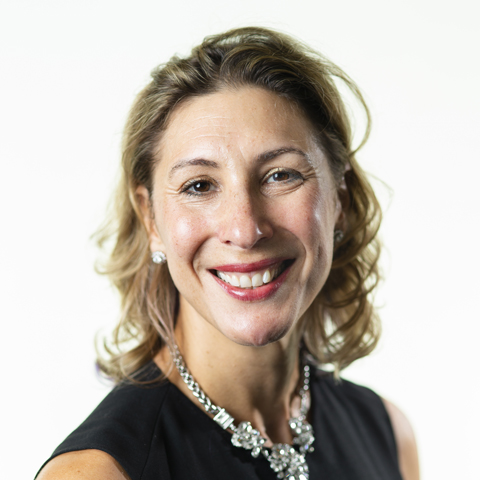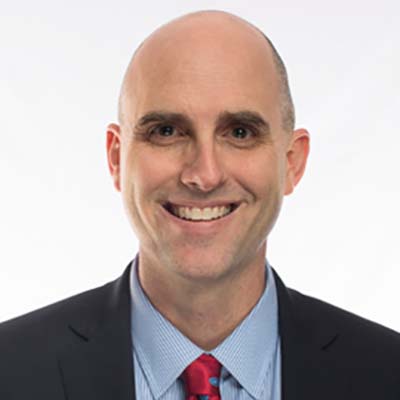Last year, seven Vituity EDs participated in a yearlong collaborative learning initiative aimed at rapid improvement of emergency department (ED) turnaround times to discharge (TAT-D). Despite setbacks, the participating departments posted some significant improvements that saved their patients an estimated 5.3 million minutes (or 10 years) of waiting.
To build on this success, Vituity's directors of quality and performance are leading two new collaborative learning initiatives (also known as collaboratives) in 2015. Gregg Miller, MD, is working with eight EDs to improve turnaround time to discharge (TAT-D), while Tiffany Hackett, MD, MBA,
is working with a second group to enhance patient experience. Perspectives
recently sat down with these leaders to talk about the goals of the collaboratives, the lessons learned and how readers can apply the model to their own hospitals.Perspectives: Welcome Dr. Hackett, Dr. Miller. So for the first time, we're running two collaboratives this year. How are things going?
Dr. Miller: Well, it's interesting because the two topics require such different approaches. TAT-D is very focused on processes and patient flow. Patient experience also involves some process work, but the real focus is on interactions. Teams look at the tone they're setting for each encounter and the messages they're sending to the patient.
Perspectives: I understand some important lessons came out of last year's collaborative. What are you doing differently this time around?
Dr. Hackett: Last year's initiative was organized around a geographic region. This year, we really focused on selecting departments that demonstrated readiness. Selection criteria included strong nursing and physician leadership, adequate staffing, and absence of competing priorities like a big construction project or hospital initiative.
Dr. Miller: I also think our timing is better. Our last collaborative started in the fall, and just when the sites got going, they were overwhelmed with the winter flu surge. This year, the bulk of the work will be done in the spring and summer when teams have a bit more bandwidth.
Perspectives: So how does this collaborative look in action?
Dr. Hackett: Our process is based on the
Institute for Healthcare Improvement's Collaborative Model. To kick things off, each collaborative holds a two-day meeting that brings together nursing and physician leaders from the participating EDs. Vituity clinical leaders, practice management consultants and outside experts present to the participants on current best practices as well as some innovations that are on the horizon. The event also gives participants protected time to talk strategy with their teams and draft preliminary action plans to take back to their EDs.
Throughout the year, Dr. Miller and I hold monthly one-hour coaching meetings with the leaders of each participating ED. These are typically done by phone, but this year, we're actually planning to visit each site to get the lay of the land and see where they need support.
Throughout the process, the participating teams learn from and support one another. They come together again at the halfway point and at the end of the collaborative to report their progress and share lessons learned.
Perspectives: As a coach, how do you help the teams move forward?
Dr. Hackett: One important thing we do is to help teams take a very general strategy and tailor it to their specific site. Every ED has unique workflows, layouts, policies, personalities and so on that need to be taken into account. We also share what's working and not working for the other teams. And we help each team look critically at its plan to make sure it's realistic and workable.
Dr. Miller: Definitely. In general, most physician and nurse leaders already have a good idea what needs to be done, so we just give them an incremental bit of knowledge on top of that. But I think one of the most important functions of the coaching visits is that they give the team leaders an excuse to come together and really focus on the topic for an hour.
Dr. Hackett. Oh, absolutely.
Dr. Miller: It's funny, often we don't need to say much on these coaching calls. As soon as all the players are in one room, they do a lot of the work themselves. It's really valuable for them to have that protected time.
Perspectives: What best practices did your teams choose to focus on?
Dr. Miller: Two of the TAT-D sites chose to place a physician in their Rapid Medical Evaluation (RME)
® area during peak times, which will allow them to better care for medium-acuity patients. One of those sites is also refining its registration process so that the nurse and registrar work more closely together.
Some of our teams are changing the way patients flow through the department. One is trialing an internal waiting room process. Another is actually looking at the feasibility of constructing cubicles in the waiting room. That's still in the planning phase, because getting construction approved takes a lot of collaboration with the hospital.
Dr. Hackett: On the patient experience side, strategies chosen include implementing a callback program and starting a care card process. One group is holding an educational retreat where the team will come up with a mission statement and clarify their values with regard to patient care and teamwork.
Perspectives: I know both collaboratives just started this spring, but have you seen any results yet?
Dr. Hackett: At least one of our participating EDs has shown some very promising gains in their patient satisfaction scores. At the beginning of the year, they were scoring below average in physician-nurse collaboration and toward the bottom in lab satisfaction. Within a quarter, they've climbed to slightly above average in both categories. Of course, this probably reflects some work done before the collaborative, but it's still pretty impressive.
Dr. Miller: Most of my teams are only a week or two into implementation, so it's tough to draw conclusions. We've seen improvements, but they tend to be inconsistent. For example, one ED that previously had a TAT-D in the 180s to 190s implemented a new process. They just had a really high-volume day where their TAT-D was 142 minutes, which is amazing. But the previous day, with lower volumes, they came in at 160. So they're still up and down.
Perspectives: What have you learned so far that might be useful for other hospitals interested in this model?
Dr. Hackett: One thing we're learning is that it's difficult to get timely feedback on patient satisfaction. A lot of the third-party vendors who administer the surveys report quarterly, and many patients wait several weeks to respond. So I have a solid idea how the teams performed three months ago, but assessing day-to-day performance is difficult.
Dr. Miller: I think the biggest challenge for these sites is sustaining the process so that it has an impact every single day. It takes time to really hardwire changes into the department's workflow, so that’s what we're focused on right now.
Perspectives: Thank you both for taking the time to share. Before we wrap up, is there anything else you want folks to know about the collaborative model?
Dr. Miller: I think one of the biggest benefits is that it helps align clinical leaders from all disciplines. In particular, I think EDs function best when there's a strong dyad between the medical and nursing leadership. So the collaborative provides an opportunity for the medical director and nurse manager to get on the same page about a key issue and coordinate their approach.
Dr. Hackett: From the patient experience side, I think the collaborative is an opportunity for teams to get really honest with one another about how they interact with patients. That's a tough thing to do, but if we take time to connect and communicate with our patients and demonstrate teamwork, we're meeting important needs for that patient and family. The collaborative provides the tools teams need to make those positive interactions part of the culture.























